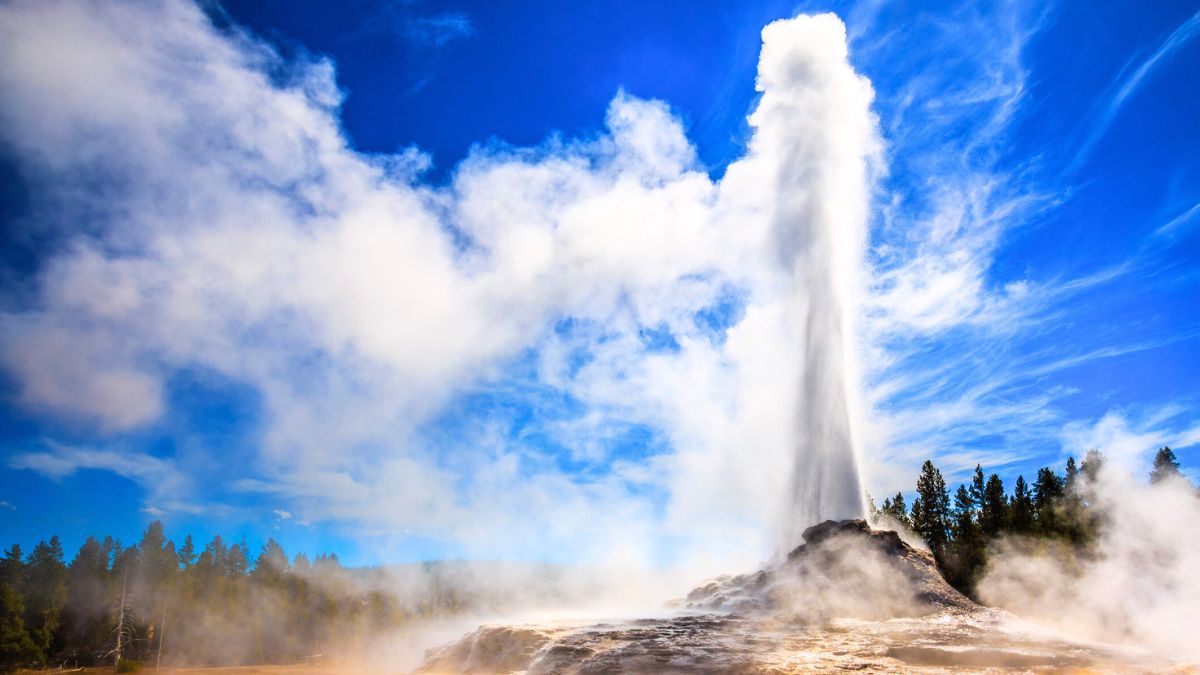On July 23, Yellowstone National Park, a place usually known for its stunning vistas and predictable geyser shows like Old Faithful, gave tourists a bit more of a “show” than expected.
Near Sapphire Pool in the park’s Biscuit Basin, a spectacular hydrothermal explosion sent visitors scrambling as mud and rocks burst skyward. The incident unfolded rapidly. It began with a hissing noise—a warning unheeded by many until the ground beneath them betrayed the calm.
In moments, what was a peaceful hot spring visit morphed into a chaotic spectacle. Visitors at the site reacted with awe and fear. Tour guide Isaac Fisher described the prelude to the eruption as an unusual hiss from Cliff Pool, quickly followed by an explosive release of energy that felt like a “shock wave” to the chest. The boardwalk vibrated underfoot, and for about 25 seconds, everyone in proximity was a reluctant guest at nature’s own, unscripted fireworks show.
This isn’t Yellowstone’s first rodeo with such explosive displays. The park is dotted with geysers and hot springs, each with its own pattern of behavior—some predictable like Old Faithful, and others, well, not so much. Hydrothermal explosions like this one occur when superheated water below the earth’s surface rapidly turns to steam, expanding and seeking escape with explosive force. What makes these events particularly dicey is their unpredictability. Scientists, despite their best efforts, have yet to crack the code on when exactly these subterranean pressures decide to let off steam in such a dramatic fashion.
Michael Poland, a top scientist at the Yellowstone Volcano Observatory, admits that while volcanic activity can often give signs before an eruption, hydrothermal systems like those at Yellowstone are a different beast. Unlike volcanic activity, where magma movement and chemical changes can often be tracked, the processes leading to a hydrothermal explosion can occur deep underground with minimal detectable surface activity until moments before an event.
Could this burst of mud and rock be a harbinger of volcanic doom?
Despite the dramatic display and the park’s history with volcanic activity, experts assure us that this event is not a prelude to a volcanic eruption. Yellowstone’s last significant eruptive phase occurred around 70,000 years ago and involved relatively benign lava flows. The park’s super volcano last erupted approximately 631,000 years ago, leading to the formation of the Yellowstone Caldera. These supervolcanic eruptions are indeed massive, but they are exceedingly rare and would be preceded by extensive precursory activity.
The U.S. Geological Survey (USGS) closely monitors this volcanic system and categorizes the current activity as normal. For now, Yellowstone’s volcano continues to snooze away, and we can enjoy the park’s geothermal fireworks with a little thrill and no real fear.

